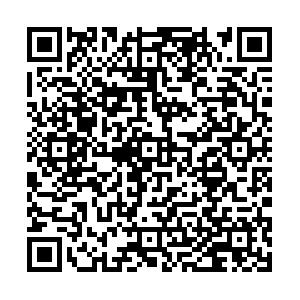文化主权视域下流失文物追索的法理思考—基于石窟寺流失文物的分析
Jurisprudential Thinking on Cultural Property Recovery from the Perspective of Cultural Sovereignty
-
摘要: 以石窟寺文物为代表的大量中国文物在近代流失,其背景复杂、肇因独特,对国家文化主权构成严重侵害,也对当下展开的法律追索构成诸多障碍。国内法层面上,事实证据缺失、所有权法律依据模糊、现代民事法律制度的诸多规则构成追索障碍;国际法层面上,国际条约存在无溯及力、适用范围有限、条款设计缺陷和执行力不足等问题,难以为追索提供充分支撑。我国应坚持文化主权原则,在人类命运共同体理念的统摄下推进文物追索;要加强海外流失文物调查,明确追索的事实依据;根据现持有人法律地位差异制定针对性追索策略;将文物追索纳入统筹推进国内法治和涉外法治的系统工程,从立法、执法和司法层面完善文物追索法治体系,积极参与国际文物治理和国际法规则改革,促进流失文物返还国际新秩序的形成。Abstract: Under complicated and unique history background, the loss of China’s cultural property overseas around the 1920s, especially those from cave temples, not only constitutes the infringement of cultural sovereignty of China, but also brings a series of legal obstacles to the international cultural property recovery. At the domestic level, the lack of evidence for the origin of cultural property, the ambiguity of the legal basis for ownership, and the modern civil law system have posed obstacles to the claim for cultural property. The non-retroactive effect, limited scope of application, flawed design and insufficient enforcement of current international conventions, also fail to provide adequate support for the recovery of cultural property at the level of international law. China should adhere to its cultural sovereignty in the recovery of lost cultural property, with the idea of building a community of shared future for mankind. Through strengthening the investigation of cultural property lost overseas, the basis for recovery could be clarified. It’s also important to develop recovery strategies based on the legal status of various holders. By taking the international cultural property recovery into a coordinate approach to promoting the rule of law at home and in matters involving foreign elements, to improve the rule of law system through legislation, law enforcement and judicial procedure, and to take active participation into the reform of international norms, the formation of a new international order favoring the restitution of cultural property can be eventually achieved.
-
Key words:
- cultural sovereignty /
- cultural property recovery /
- legal dilemma /
- cave temples
-
表 1 我国海外流失石窟寺文物回归案例汇总表㉝
回归时间 回归途径 回归文物 文物归还方/促成文物归还方 文物出现地/持有人 2001 归还 龙门石窟石雕罗汉像 加拿大国家美术馆 加拿大国家美术馆 2005 回购 5件龙门石窟文物 陈哲敬/国家文物局 美国文物市场 2005 回购 2件龙门石窟佛头像 国家文物局 美国收藏家 2008 回购 天龙山石窟第10窟佛首 许鹏 美国佳士得拍卖行 2010 回购 天龙山石窟第21窟菩萨坐像、第18窟菩萨头像 国家博物馆 纽约春季拍卖会 2020 回购 天龙山石窟第8窟佛首 张荣 日本东瀛国际拍卖行 制定时间 发文机关 法令名称 石窟寺相关内容 所有权 1909 清政府民政部 《保存古迹推广办法》 言及“石质古物”为寺僧和匪徒所盗卖与洋商的情况。严禁倒卖,违者构成犯罪,并追究地方责任。③ 无规定 1913 河南省民政长 《河南保存古物暂行规程》 “宗教中之雕刻绘塑各像”“宗教中孤本之经典”属于应保存的古物类型,不得任意损害、发掘或盗卖和抵押,违者依法治罪。 古物(包括考古文物)可
依法律或习惯归私人所有。
制定《古物调查表》,列有“所有权”一项。1914 北洋政府内务部 《内务部为妥善保护龙门古迹致河南民政长训令》 不得将龙门佛龛任意毁坏抛弃,并将“现在所有佛像石刻究有若干,一一登记”。 无规定 1914 北洋政府大总统 《限制古物出口令》 强调古物售运毫无节制将对国家文化之留存的危害,着令制定限制古物出口章程,将防止文物流失散佚的职责落实到地方。 无规定 1916 北洋政府内务部 《保存古物暂行办法》 明确对“壁垒岩洞”“画壁摩崖”予以保护,禁止任意榻摹、毁坏和贩运,避免走私海外。 无规定 1916 河南省省长 《保守龙门石佛规条》 严禁任何人毁坏和盗窃,对龙门石窟造像进行调查、统计列表。 无规定 1928 国民政府内政部 《名胜古迹古物保存条例》 重申对壁垒、岩洞等遗迹和碑板、造像、画壁、摩崖等文物的保护,规定盗窃名胜古迹的刑事处罚。 制定《名胜古迹古物调查表》,列有“所有者”
一项。1930 国民政府 《古物保存法》 明确古物流通以国内为限;未经批准而采掘文物的行为认定为盗窃;禁止外国人参与考古发掘;设立“中央古物保管委员会”,每年对文物进行登记造册。 埋藏地下及由地下暴露地面之古物,概归国有。 -

 点击查看大图
点击查看大图
计量
- 文章访问数: 5465
- HTML全文浏览量: 337

 下载:
下载: 
 沪公网安备 31010102003103号
沪公网安备 31010102003103号